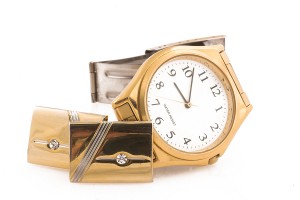 Due to the fine line that differentiates the two categories, consumers often find themselves confused when it comes to antique jewelry, and estate or vintage jewelry. These categories do sometimes overlap, but professional gemologists and jewelers know that these categories do actually have their own defining standards that separate them from one another.
Due to the fine line that differentiates the two categories, consumers often find themselves confused when it comes to antique jewelry, and estate or vintage jewelry. These categories do sometimes overlap, but professional gemologists and jewelers know that these categories do actually have their own defining standards that separate them from one another.
ESTATE JEWELRY
The term estate when used to describe jewelry can be quite broad, but traditionally indicates any piece with value that has been previously owned and is now being sold again by an estate, family, or owner. Hence the term estate jewelry may be applied when someone purchased a ring earlier this year and is now selling it again, as well as to a jewel that is sold from your great-grandmother’s century old collection that you inherited (although this jewelry might be of an appropriate age to be considered antique). Consequently, when a piece of jewelry is labeled as estate jewelry, the term indicates relatively little about the value or age of the piece.
VINTAGE JEWELRY
More specific in it’s definition than Estate Jewelry, a vintage piece is an item that has reached a certain age. While the term is most commonly defined as describing jewelry that is at least 25 years old, vintage is also a category with some inconsistencies behind it, varying from jeweler to jeweler. Costume jewelry from early to mid 20th century is often deemed vintage, with anything older being classified as antique, but either may also be estate jewelry. With this category, it is important to know and remember that vintage jewelry is quite different from antique in terms of the age of the piece.

